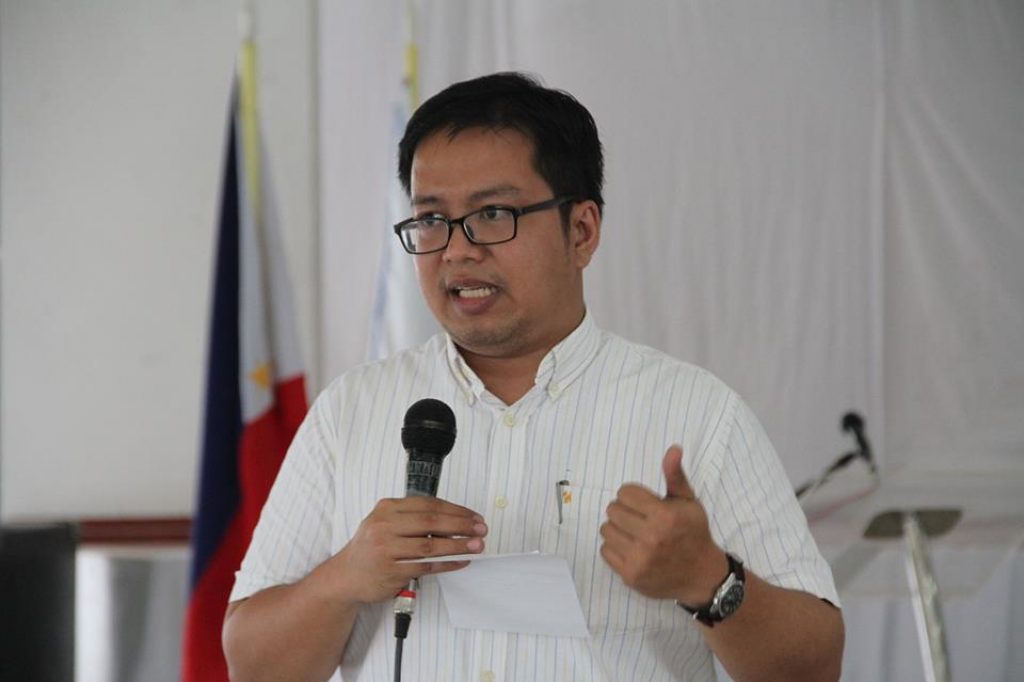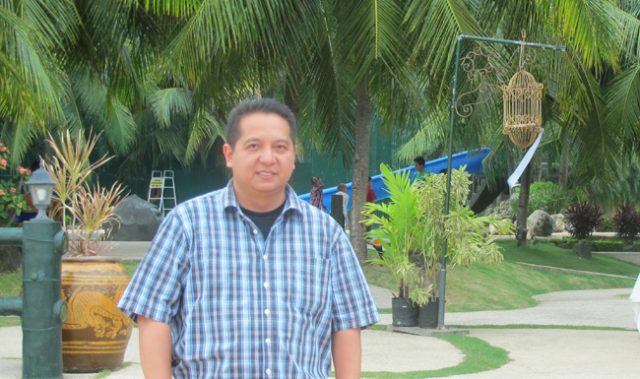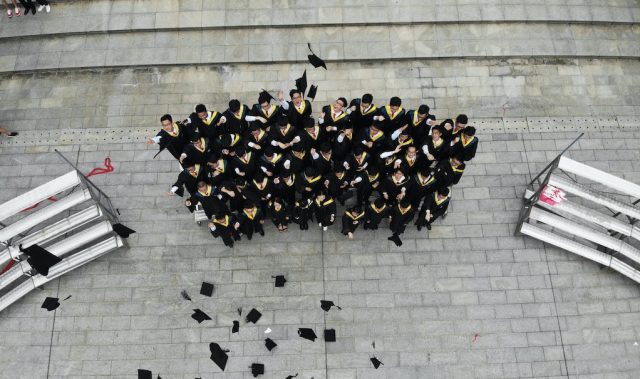
AsianScientist (Aug. 1, 2016) – In places that are constantly ravaged by natural disasters, weather reporting that is timely, accurate and easily understood could very well save lives.
One country that would benefit from improved weather reporting is the Philippines, says Timothy James Dimacali, who is the science and technology editor of Philippine news portal GMA News Online. Indeed, the Philippines is the fourth most disaster-prone country in the world, according to a United Nations study. In the period between 1995 and 2015, it experienced a total of 274 natural calamities, affecting the lives of 130 million people.
Here in Singapore as one of the 18 recipients of the Asian Journalism Fellowship 2016, Dimacali will spend the next three months studying the best practices in science journalism. Open to mid-career journalists based in Asia, the initiative is spearheaded by the Temasek Foundation and Nanyang Technological University.
Below, Dimacali tells Asian Scientist Magazine how he plans to raise the bar for science reporting in his native Philippines, with a particular focus on weather science.
- Could you describe your current position at GMA News and share with us how you came to be its science and technology editor?
I currently helm the science and technology section of GMA News Online, the only science-focused section in one of the biggest mainstream news portals in the Philippines.
When I was promoted to head of the section in 2010, it was originally just focusing on technology topics such as consumer technology and popular ICT issues. It was a pretty standard, run-of-the-mill gadgets page. But being a lifelong science geek, I saw the opportunity to put my own spin on the site.
I convinced our editor-in-chief that venturing into popular science stories would give us a competitive edge over rival news websites. On these websites, a story on genetically-modified (GM) food might end up in the lifestyle and wellness section, for example, or a story on Tesla might find its way into the business or motoring sections.
By 2013, my responsibilities were expanded even further to include weather reporting. It fell into my lap, mostly because I had a proven knack for handling technical subjects.
- What do you enjoy most about the science and technology beat?
The fun for me is always in looking for that creative hook that will latch your readers in. A good deal of the material I run into is technical—as it should be, because it’s usually a scientific paper or government data meant for professional eyes. It’s always a great challenge figuring out how to distill this into something that’s not just understandable, but actually enjoyable to our readers.
I was an English major back in college, and I majored in creative writing. The skills I learned in that field serve me well, because much of successful science communication (or of communication in any other field, for that matter) hinges on the use of language—primarily to convey ideas, and secondly, to do so in a grand, evocative fashion.
It gets even more fun when I’m able to sneak in a science fiction reference or two that a few keen-eyed readers pick up on! I’ve run the gamut of everything from Star Trek to Visionaries: Knights of the Magical Light.
- As one of the 18 recipients of the Asian Journalism Fellowship 2016, what are your plans for the next three months?
I was accepted into the Asian Journalism Fellowship on the strength of my pitch to study science reporting best practices, with a focus on weather science.
The Philippines is hit by about a dozen typhoons per year, and Typhoon Haiyan has shown us that we should brace for stronger ones to come. Meanwhile, social media and advancements in local forecasting technology have helped make weather science accessible to everyone.
But how is weather science understood and communicated as news? When a cyclone comes barreling into the Philippine Area of Responsibility, at what point do you sound the alarm and urge the public into action? Given that weather is always a matter of probability, this last question is a very difficult one to answer.
It’s a multi-faceted problem that touches on understanding both the data itself and the language used to convey it. It’s this coming-together of science and art that’s always fascinated me, and which I’d like to look at up close.
- How do you think news outlets in the Philippines can better report on weather and climate change?
That’s a very good question. Fortunately, climate change awareness is on the rise in the Philippines, especially in the wake of extreme weather events in recent years—for example, Haiyan in 2013 or El Niño in 2016.
While the scope and ‘correctness’ of public understanding still leaves much to be desired, at least it’s getting there. But for weather reporting, we need to establish some baseline rules on handling raw weather data: what kind of phenomena do we have to look out for? How do we talk about these phenomena as they unfold?
For example, when a cyclone develops in the Pacific, at what point do we shift from merely reporting on it to actually warning the public of its potential effects?
To address this, we need more open discussion—on the one hand, between scientists, and on the other, between journalists and the public. Scientists should be more open to sharing their data with the public, and journalists and the public at large should be more open to embracing science.
The second issue is a matter of language. We need to establish guidelines for emergency and disaster communications: what kind of language to use in various scenarios, to convey caution and alarm at the appropriate times; and how to anticipate and answer common public concerns before, during, and after a calamity.
There is also the matter of the overall reporting style, depending on the image they want to convey to the public, which differs markedly between news organizations. My organization, for example, has its own in-house meteorologist, who lends a bit of authoritative gravitas to the reportage.
It would be interesting to see what common takeaways there may be from these disparate approaches, and if they can be collated into something that can be used across the industry.
- What can science journalists like yourself do to increase interest in science and technology in the region?
First of all, we need to establish strong ties with our local universities, because that’s where a lot of the discoveries and research are taking place. Not all institutions have a strong public relations arm to get word of their work out there, so we have to go to them.
This isn’t always as straightforward as it would seem, because there have been cases where scientists were wary of talking to journalists for fear of being misquoted or misinterpreted. It takes time to build up trust and establish rapport with scientific sources, but it’s well worth the effort.
Secondly, a science journalist should always keep a finger on the pulse of popular culture and the local zeitgeist. At its heart, effective communication is all about describing something in terms that are familiar and close to home. Popular culture is always a useful source of inspiration and potential metaphors for helping bring lofty ideas down to earth.
But it’s not just about bringing things down to the public; it’s also about elevating public concerns to the realm of scientific discourse. From national election results to environmental protection, many issues that make the news can be dissected—and, in many cases, resolved—through scientific analysis. It’s a practical solution, and probably the closest we can get to an actual technocracy!
- What do you have planned after this fellowship?
My short-term goal is to take what I learned from the fellowship back to my organization and help build up best practices for science and weather reporting—not just for ourselves, but for the still-nascent field as a whole.
Next year, I want to ramp things up and pursue a master’s degree in science communications abroad.
———
Copyright: Asian Scientist Magazine; Photo: Timothy Dimacali.
Disclaimer: This article does not necessarily reflect the views of AsianScientist or its staff.












